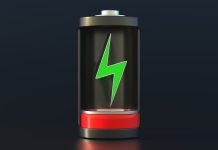
As the world’s demand for energy storage grows, the supply of lithium—a key component in most batteries—is becoming limited and more expensive.
This has led scientists to explore alternatives like sodium, potassium, magnesium, and zinc-ion batteries.
While these alternatives are promising, they still face challenges in terms of how much energy they can store, how fast they can charge and discharge, and how stable they are over time.
Researchers from University College London (UCL) have discovered a new technique called “carrier pre-intercalation” that can help improve the performance of these alternative batteries.
Their study, published in eScience, explains how this technique works and how it can make these batteries more efficient and reliable for the future.
In batteries, ions move back and forth between electrodes to store and release energy.
However, in non-lithium batteries, the materials used for the electrodes can struggle with ion movement, leading to issues with battery capacity and stability. This is where carrier pre-intercalation comes in.
Carrier pre-intercalation involves inserting special ions into the electrode materials before the battery even starts working. This helps enlarge the spaces between layers in the electrodes, making it easier for ions to move in and out.
The technique also improves how well these materials conduct electricity, which leads to faster charging and discharging.
The UCL team reviewed both chemical and electrochemical pre-intercalation methods and found that they significantly improve the stability and lifespan of sodium, potassium, magnesium, and zinc-ion batteries.
These improvements could make these batteries a more viable option for many applications, from electric vehicles to large-scale energy storage for the power grid.
“This approach not only solves some of the problems that non-lithium batteries face, but it also helps reduce the world’s reliance on lithium, which is becoming harder to find and more costly,” said Dr. Yang Xu, one of the researchers behind the study.
The impact of this research is significant. By making sodium, potassium, magnesium, and zinc-ion batteries more efficient, carrier pre-intercalation could lead to wider use of these technologies.
This is especially important for electric vehicles and renewable energy storage, which are key to reducing carbon emissions and combating climate change. As these alternative batteries become more reliable, they could also help lower costs and promote the adoption of renewable energy systems around the world.
Overall, this breakthrough represents a major step forward in the quest for more sustainable and affordable energy storage options, helping to meet the growing global demand while reducing dependence on lithium.



